Yanwei Cui
Understand customer reviews with less data and in short time: pretrained language representation and active learning
Oct 29, 2019



Abstract:In this paper, we address customer review understanding problems by using supervised machine learning approaches, in order to achieve a fully automatic review aspects categorisation and sentiment analysis. In general, such supervised learning algorithms require domain-specific expert knowledge for generating high quality labeled training data, and the cost of labeling can be very high. To achieve an in-production customer review machine learning enabled analysis tool with only a limited amount of data and within a reasonable training data collection time, we propose to use pre-trained language representation to boost model performance and active learning framework for accelerating the iterative training process. The results show that with integration of both components, the fully automatic review analysis can be achieved at a much faster pace.
Modelling customer online behaviours with neural networks: applications to conversion prediction and advertising retargeting
Apr 20, 2018



Abstract:In this paper, we apply neural networks into digital marketing world for the purpose of better targeting the potential customers. To do so, we model the customer online behaviours using dedicated neural network architectures. Starting from user searched keywords in a search engine to the landing page and different following pages, until the user left the site, we model the whole visited journey with a Recurrent Neural Network (RNN), together with Convolution Neural Networks (CNN) that can take into account of the semantic meaning of user searched keywords and different visited page names. With such model, we use Monte Carlo simulation to estimate the conversion rates of each potential customer in the future visiting. We believe our concept and the preliminary promising results in this paper enable the use of largely available customer online behaviours data for advanced digital marketing analysis.
Combining multiple resolutions into hierarchical representations for kernel-based image classification
Jul 12, 2016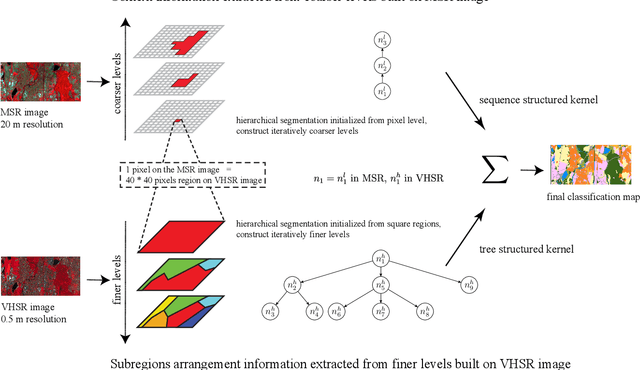
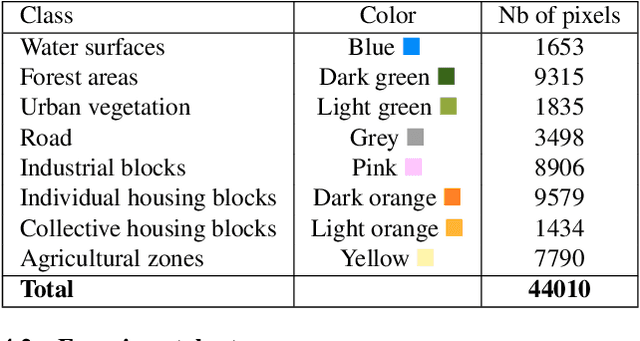
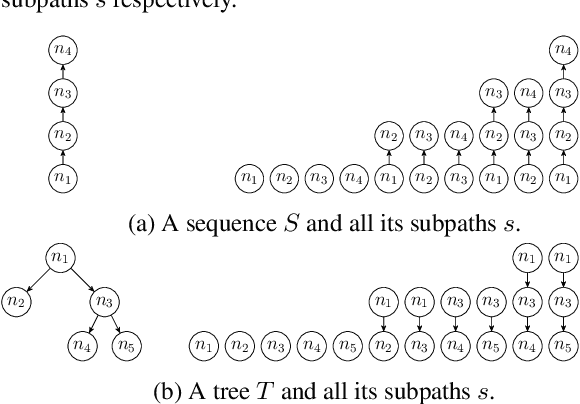
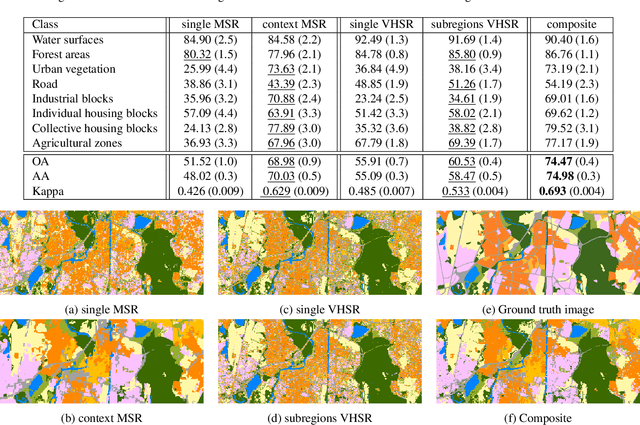
Abstract:Geographic object-based image analysis (GEOBIA) framework has gained increasing interest recently. Following this popular paradigm, we propose a novel multiscale classification approach operating on a hierarchical image representation built from two images at different resolutions. They capture the same scene with different sensors and are naturally fused together through the hierarchical representation, where coarser levels are built from a Low Spatial Resolution (LSR) or Medium Spatial Resolution (MSR) image while finer levels are generated from a High Spatial Resolution (HSR) or Very High Spatial Resolution (VHSR) image. Such a representation allows one to benefit from the context information thanks to the coarser levels, and subregions spatial arrangement information thanks to the finer levels. Two dedicated structured kernels are then used to perform machine learning directly on the constructed hierarchical representation. This strategy overcomes the limits of conventional GEOBIA classification procedures that can handle only one or very few pre-selected scales. Experiments run on an urban classification task show that the proposed approach can highly improve the classification accuracy w.r.t. conventional approaches working on a single scale.
Combining multiscale features for classification of hyperspectral images: a sequence based kernel approach
Jun 15, 2016
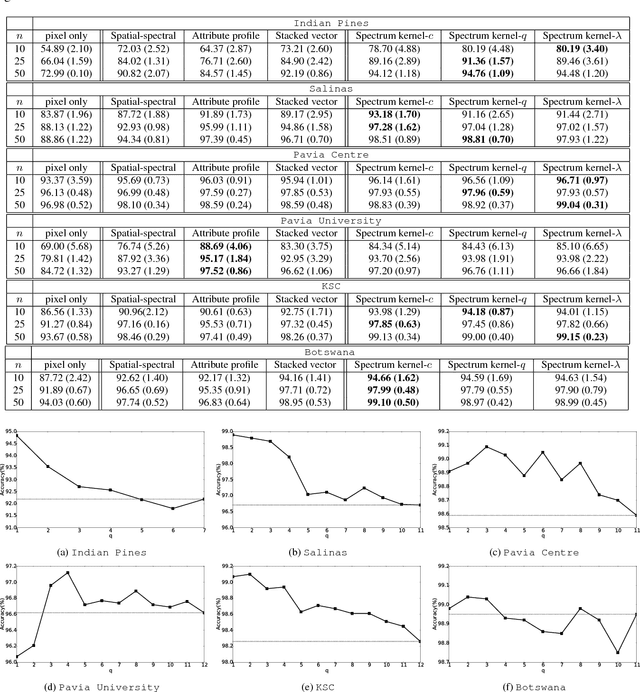
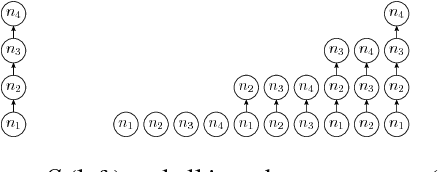
Abstract:Nowadays, hyperspectral image classification widely copes with spatial information to improve accuracy. One of the most popular way to integrate such information is to extract hierarchical features from a multiscale segmentation. In the classification context, the extracted features are commonly concatenated into a long vector (also called stacked vector), on which is applied a conventional vector-based machine learning technique (e.g. SVM with Gaussian kernel). In this paper, we rather propose to use a sequence structured kernel: the spectrum kernel. We show that the conventional stacked vector-based kernel is actually a special case of this kernel. Experiments conducted on various publicly available hyperspectral datasets illustrate the improvement of the proposed kernel w.r.t. conventional ones using the same hierarchical spatial features.
A Subpath Kernel for Learning Hierarchical Image Representations
Apr 06, 2016



Abstract:Tree kernels have demonstrated their ability to deal with hierarchical data, as the intrinsic tree structure often plays a discriminative role. While such kernels have been successfully applied to various domains such as nature language processing and bioinformatics, they mostly concentrate on ordered trees and whose nodes are described by symbolic data. Meanwhile, hierarchical representations have gained increasing interest to describe image content. This is particularly true in remote sensing, where such representations allow for revealing different objects of interest at various scales through a tree structure. However, the induced trees are unordered and the nodes are equipped with numerical features. In this paper, we propose a new structured kernel for hierarchical image representations which is built on the concept of subpath kernel. Experimental results on both artificial and remote sensing datasets show that the proposed kernel manages to deal with the hierarchical nature of the data, leading to better classification rates.
 Add to Chrome
Add to Chrome Add to Firefox
Add to Firefox Add to Edge
Add to Edge